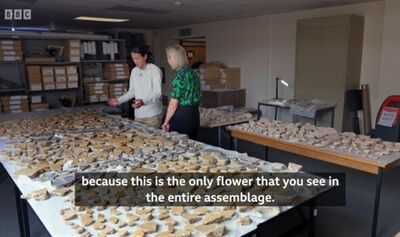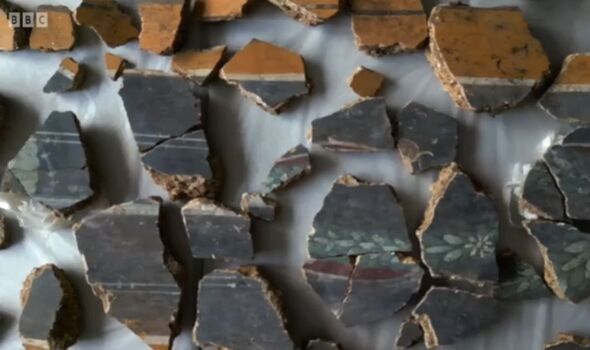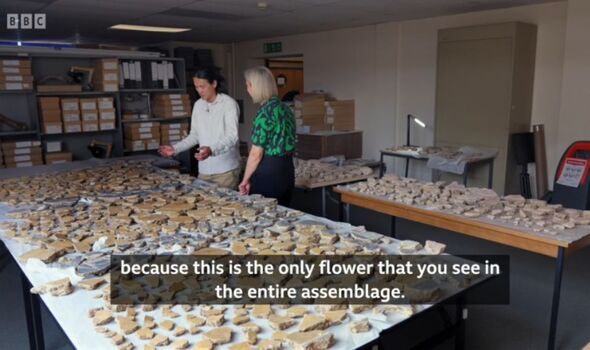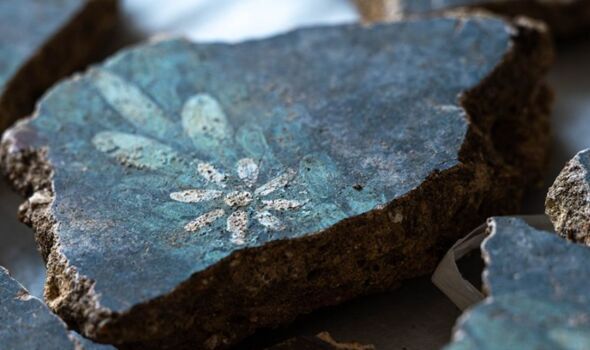

have pieced together the 'world's most difficult jigsaw puzzle' to reveal an incredible 2,000-year-old Roman wall painting. The Museum of London Archaeology (Mola) spent many months sifting through thousands of fragments to uncover the ancient treasure.
In 2021, pieces of the fresco were amazingly discovered at a site in that's being redeveloped. It has taken until now to piece together the wall plaster to reveal remarkable frescoes that decorated a luxurious . Described by the team as the "Beverly Hills of Roman London", the art provides fascinating insight about the affluence of the area where they were found.

Among the 120 boxes of fragments is rare evidence of a painter's signature, as well as unusual graffiti of the ancient Greek alphabet alongside beautiful drawings of birds, fruit and flowers.
The largest of the frescoes, measuring about 16.4ft x 9.8ft (5m by 3m), has a lower section of pale pink, dotted with specks of paint to imitate marble. Above are yellow panels with green borders.
A delicate daisy, a stringed instrument called lyres, white cranes and candelabras make the wall paintings even more beautiful.
The frescoes once decorated around 20 internal walls of an early Roman building, making them one of the largest collections of painted Roman plaster ever discovered in London.
However, the ancient art is missing a vital piece. One piece has the Latin word 'fecit', which translates to "has made this", however, the part underneath where the name should be is missing.
The team hopes that, as they sift through the fragments, the missing piece can be found, which would provide insight into the person, or people, behind this artpiece.

Mola senior building material specialist Han Li said: "It's one of the biggest - if not the biggest - assemblages of Roman wall plaster and paintings we've ever found in Roman London".
The paintings were designed to showcase the wealth and impeccable taste of the building's owner or owners.
A bunch of grapes also appears to have been painted - however, archaeobotanists believe in a West European twist this is in fact mistletoe, a plant that grows locally.
Han Li said: "That is actually quite interesting for me, because you're seeing that the Roman painters are taking a classical idea and they're very much putting their own North West European, or local, twist on it. I think that's magnificent."
Han Li was tasked with assembling the colossal puzzle together, something that must be done with extreme care.
He said: "You have to be very careful because you can only assemble the pieces a small number of times before the plaster starts to be damaged and it flakes off.
"So you have to be quite sure before you join the pieces that this is the piece that may fit."
Further unlocking the UK's deeply intertwined history with the Roman Empire, an incredible mosaic and Roman cemetery were also uncovered at the Southwark site.
The UK's history is deeply intertwined with the Roman Empire, which occupied Britain for nearly 400 years, from AD 43 to the early 5th century.
"There was this thriving, bustling settlement quite early on in the Roman period, and it's almost the kind of wealthy suburb - the Beverly Hills of Roman London," said Andrew Henderson-Schwartz from Mola.